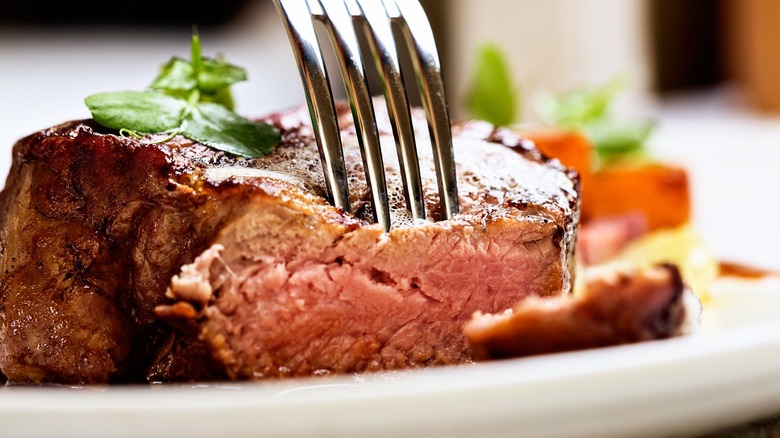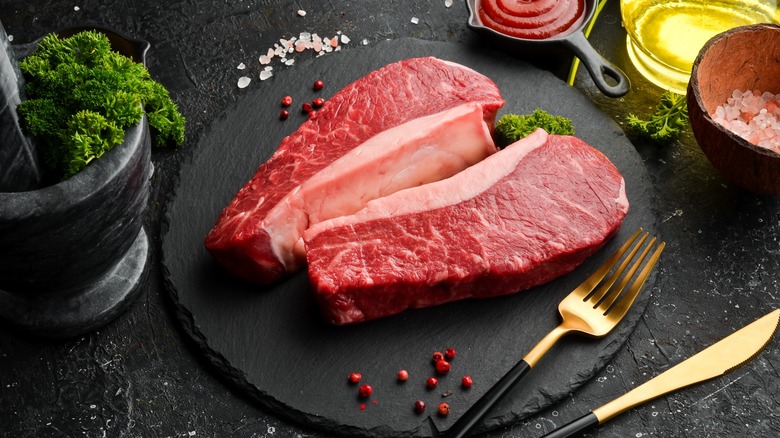The Simple Way To Tenderize A Steak Using Nothing But A Fork
Steak lovers know that a tender, juicy piece of meat is a culinary delight, but achieving that perfect tenderness isn't always easy, especially if you don't have specialized tools or ingredients. However, there's a simple and effective method to tenderize steak using something as simple as a fork. This method is not only cost-effective but also easy to do, making it perfect for any home cook looking to impress at their next meal.
But how exactly does using a fork result in tenderized beef, and why is it so effective? First, this is one of the mechanical techniques of steak tenderization. At its core, this method involves physically altering the structure of the meat to make it more tender. The principle is simple — by creating small punctures in the beef, the muscle fibers are broken down, making them less tough and easier to chew.
Moreover, using a fork for this process is particularly ingenious due to its availability in virtually every kitchen. And it not only improves the texture but also helps in better absorption of any marinades or seasonings, enhancing the flavor of the steak. Furthermore, it respects the natural quality of the meat without introducing external flavors or chemicals, keeping the beef's authentic taste intact.
How to tenderize meat with a fork
Tenderizing meat with a fork is a surprisingly simple process, yet it requires a certain amount of care and attention to detail. Begin with choosing a suitable cut of steak. Tougher cuts, like shank or round steak, often benefit the most from this method. Ensure that the beef is at room temperature before you start since this makes the meat fibers more receptive to tenderizing.
Place your steak on a clean, flat surface like a cutting board, and grab a regular dining fork. The idea here is to puncture it all over with the fork's tines. It's important to be thorough but gentle. Aim for an even distribution of holes, penetrating the meat just deep enough to break through the surface. However, avoid being too aggressive because you don't want to shred it. Once you've covered both sides, let the beef sit for a few minutes. This resting time allows the fibers that have been disrupted by the fork to relax and settle, further aiding the tenderization process.
Now, cook the steak as you prefer — grilling, broiling, or pan-frying. Due to the tenderizing, the cooking time may be slightly reduced, so keep an eye on it to avoid overcooking. Tenderizing meat using a fork is a testament to the idea that great cooking doesn't always require complex tools or techniques. Sometimes, all you need is a fork and a bit of know-how.

